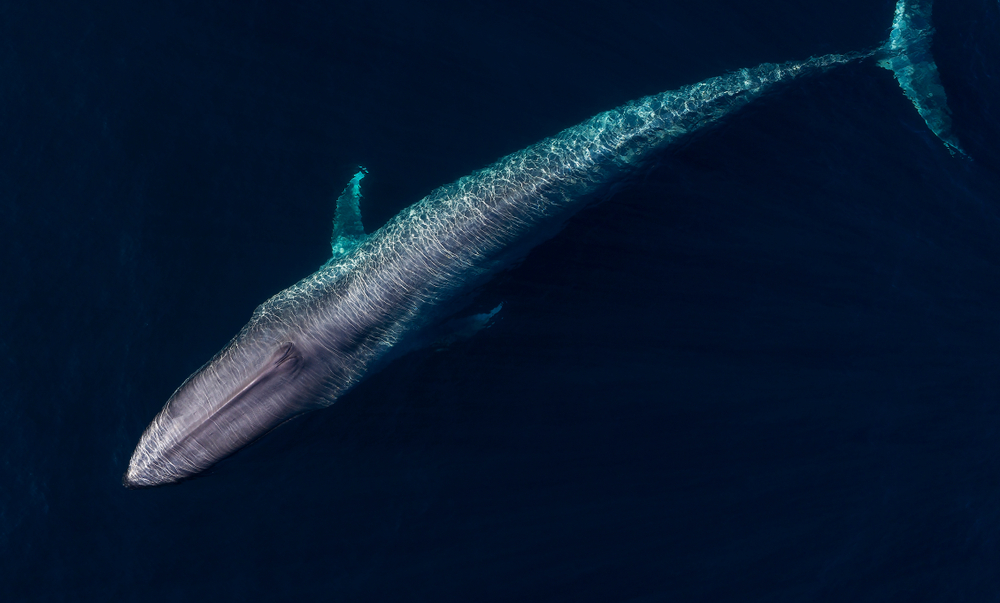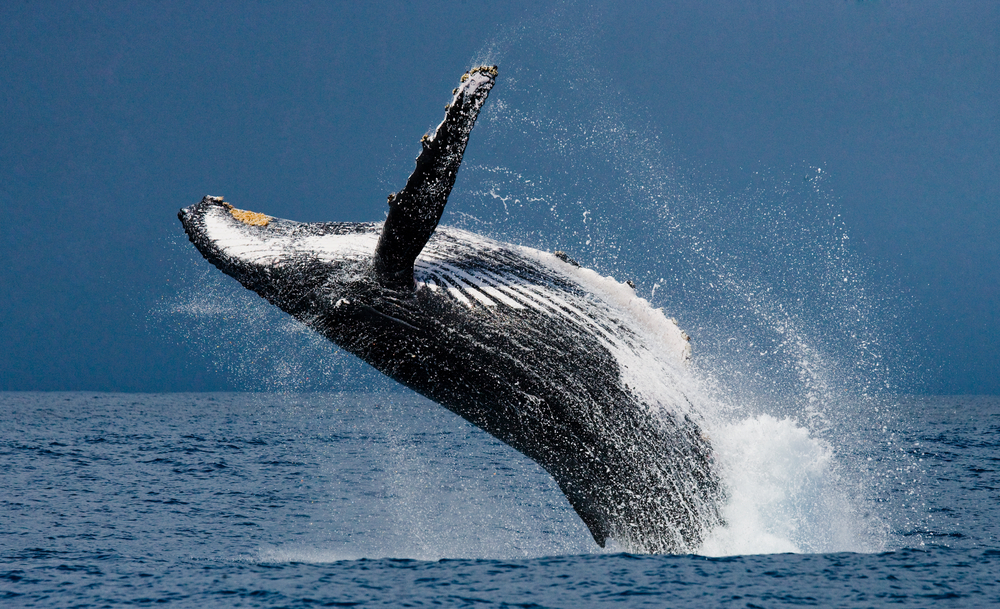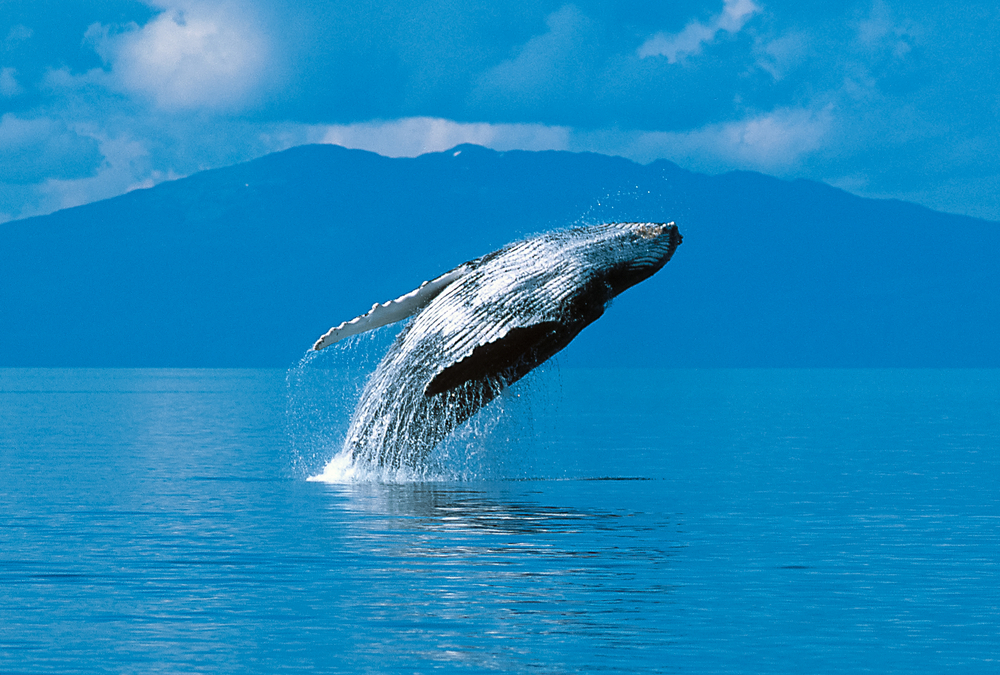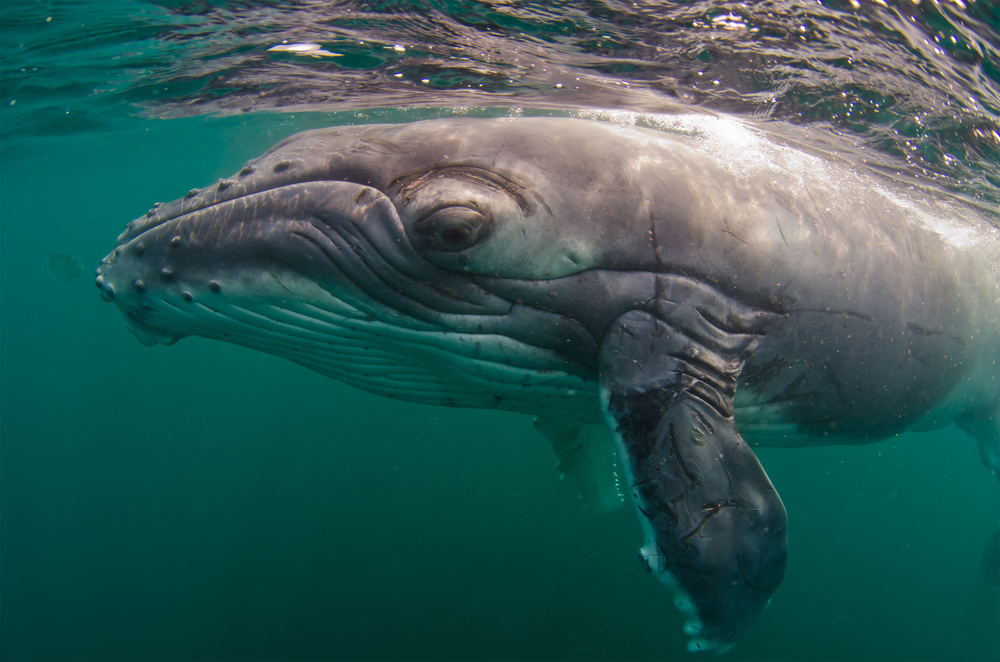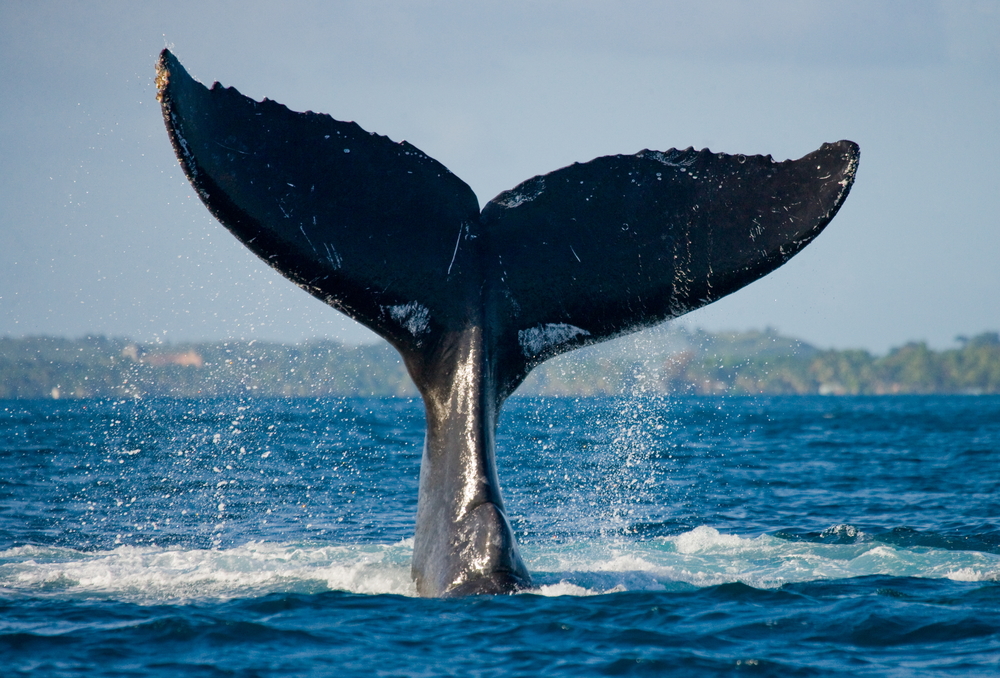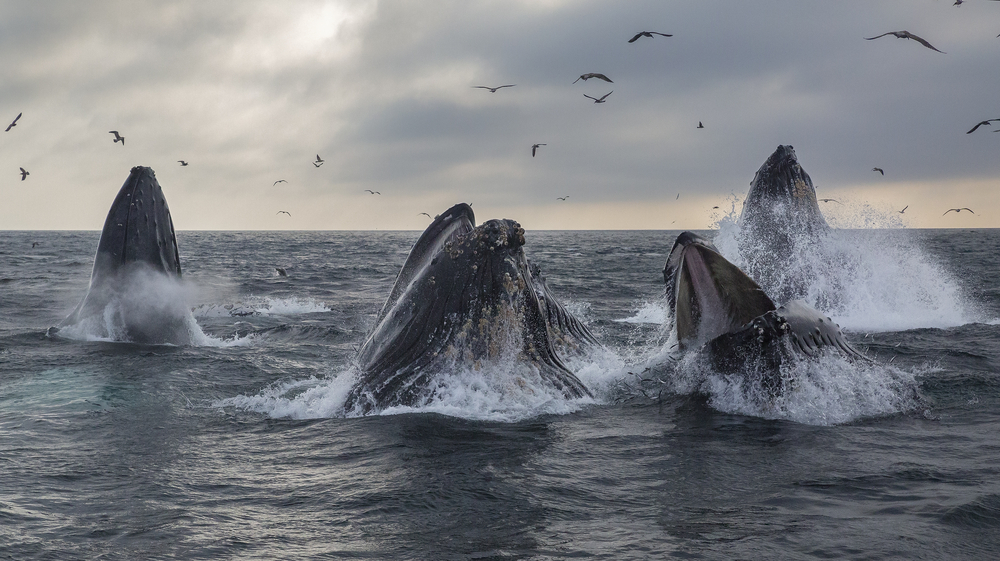The whale species most similar to the humpback whale is the fin whale, known for its streamlined body, prominent dorsal fin, and unique markings. Both species exhibit complex behaviors such as breaching and feeding techniques.
About
The Humpback Whale, scientifically known as Megaptera novaeangliae, is a magnificent marine mammal belonging to the Animal Kingdom’s phylum Chordata and class Mammalia. It is a member of the Balaenopteridae family, which includes other baleen whales such as the Blue Whale and the Fin Whale. Humpback Whales are found in oceans worldwide, inhabiting both polar and tropical waters.
These iconic whales are renowned for their acrobatic behavior, including breaching, slapping their fins and tails on the water’s surface, and singing complex songs. They have distinctively long pectoral fins, which can measure up to one-third of their body length, and a hump on their backs, giving them their name. Humpback Whales have a unique pattern of black and white markings on their underside, which can be used for individual identification.
Humpback Whales are migratory animals, undertaking long-distance journeys between feeding and breeding grounds. They feed primarily on krill and small fish by filter-feeding through baleen plates. During the breeding season, males produce haunting songs, possibly as part of courtship displays or communication.
Conservation Concerns
Humpback Whales face various conservation threats, including entanglement in fishing gear, ship strikes, habitat degradation, and climate change. While commercial whaling severely depleted their populations in the past, conservation efforts such as the International Whaling Commission’s moratorium on commercial whaling have led to population recoveries in some regions.
The IUCN Red List categorizes Humpback Whales into several subpopulations, each with its own conservation status. Overall, the global population is considered to be of least concern, but certain subpopulations, particularly those in more localized areas, may face greater threats and are classified as endangered or vulnerable. Continued monitoring, habitat protection, and efforts to mitigate human impacts are essential for ensuring the long-term survival of Humpback Whales and preserving their critical role in marine ecosystems
Physical Characteristics
The humpback whale (Megaptera novaeangliae) is a species of baleen whale known for its remarkable size, distinctive body shape, and spectacular breaching and other surface behaviors. It’s one of the larger species of whales, easily recognized by its long pectoral fins and knobbly head. Here’s a detailed overview of the physical characteristics of the humpback whale:
Size
- Body Length: Adult humpback whales typically range from 48 to 62 feet (14.6 to 18.9 meters) in length, though some individuals can reach lengths of up to 52 feet (16 meters) for males and 56 feet (17 meters) for females.
- Weight: They have a massive body weight, ranging from 25 to 30 tons (50,000 to 60,000 pounds or approximately 22,680 to 27,215 kilograms), with some large individuals weighing as much as 40 tons (80,000 pounds or around 36,287 kilograms).
Physical Characteristics
- Body Shape: The humpback whale has a distinctive body shape with a large, bulky head and a robust body that tapers to a narrow tail. The back of the whale features a small dorsal fin situated on a prominent “hump,” from which the whale gets its common name.
- Pectoral Fins: One of the most distinctive features of the humpback whale is its long pectoral fins, which can be up to one-third of its body length. These fins are often white or partially white and can be used to maneuver through the water and during social interactions.
- Tail Flukes: The tail flukes are broad and deeply notched in the center, with a unique pattern on the underside that is as individual as a fingerprint. These flukes are often used in identification studies.
- Head and Jaw: The head is broad and flat with tubercles, which are small, knob-like structures, each containing a single hair follicle. These may play a role in sensory perception.
- Skin and Coloration: The coloration of humpback whales varies from black to dark grey with some areas of white. The underside of the pectoral fins and the belly are usually white, providing camouflage from predators below. Their skin is often marked with scars and patches, which can result from interactions with other whales, predators, and parasites.
- Blowhole: As mammals, humpback whales breathe air through a blowhole located on top of their head. They typically exhale a distinctive spout of water vapor and air that can rise 10 to 13 feet (3 to 4 meters) above the water’s surface.
Humpback whales are known for their complex vocalizations, often referred to as “songs,” which play a role in communication and mating behaviors. They are found in oceans and seas around the world, migrating thousands of miles between feeding and breeding grounds. The humpback whale’s physical characteristics, along with its behaviors, make it one of the most studied and admired whale species in the ocean.
Reproduction
The reproductive cycle of the Humpback Whale (Megaptera novaeangliae) is a vital component of their biology, ensuring the continuation of this magnificent species:
- Mating and Courtship:
- Humpback whales typically engage in mating behaviors during their winter migration to warmer, tropical waters. There is no strict breeding season, but activities peak during these winter months.
- Courtship displays are complex and can include singing by males, elaborate physical maneuvers, and close interactions among individuals.
- Gestation:
- The gestation period for humpback whales is approximately 11 to 12 months. This allows the developing calf to grow sufficiently before birth, ensuring it is ready to face the challenges of marine life.
- Birth and Maternal Care:
- Humpback whales generally give birth to a single calf. Twins are extremely rare. At birth, calves measure about 10 to 15 feet (3 to 4.5 meters) in length and weigh approximately 1 to 1.5 tons (about 907 to 1,361 kilograms).
- Newborns are nursed by their mothers for 6 to 10 months, during which they consume milk rich in fat that facilitates rapid growth. Calves remain dependent on their mothers during this period for both nourishment and protection.
- Infant Development:
- The bond between the mother and calf is strong, with calves learning vital survival skills through observation and imitation. This close relationship is essential for the calf’s development and integration into the social structure of humpback whale populations.
- Sexual Maturity:
- Humpback whales reach sexual maturity at around 5 to 10 years of age, depending on factors such as sex and environmental conditions. Females typically give birth every 2 to 3 years, contributing to a slow but steady population growth.
The reproductive cycle of humpback whales, from the elaborate courtship rituals to the extended care given to calves, underscores the complexity of their social behavior and the importance of maternal investment in the survival of each generation.
Lifespan
Humpback Whales (Megaptera novaeangliae) have a lifespan that reflects their resilience as large marine mammals, though they face several threats in both their natural habitats and, on the rare occasions, in captivity:
- Lifespan in the Wild:
- Humpback whales can live for up to 80 to 90 years in the wild, with an average lifespan ranging between 45 to 50 years. Age determination in humpback whales is often conducted through the analysis of earwax plugs or eye lenses, which can provide accurate estimates of their age.
- Lifespan in Captivity:
- Humpback whales are not suited to life in captivity due to their size, complex needs, and migratory behavior. There are very few instances of humpback whales being kept in captivity, and such situations are not conducive to their natural lifespan or well-being.
- Biggest Threats:
- Entanglement in Fishing Gear: One of the significant threats to humpback whales is entanglement in fishing nets and other marine debris, which can lead to injury, starvation, or drowning.
- Ship Strikes: Collisions with large vessels pose a considerable risk, especially in busy shipping lanes that overlap with whale migration routes.
- Whaling: Although commercial whaling has significantly decreased due to international regulations, it historically reduced many humpback whale populations.
- Climate Change: Changes in ocean temperatures and prey availability can impact humpback whale feeding grounds, affecting their migration patterns and reproductive success.
- Ocean Noise: Increased noise pollution from shipping, seismic surveys, and naval exercises can disrupt humpback whale communication, navigation, and feeding behaviors.
Conservation efforts and international cooperation have been crucial in protecting humpback whale populations, leading to significant recovery in some areas. Ongoing research, monitoring, and protective measures are essential to address the threats they face and ensure their survival for future generations.
Eating Habits
Humpback Whales (Megaptera novaeangliae) exhibit diverse and sophisticated feeding techniques, showcasing their adaptability and intelligence as marine predators:
- Diet:
- Humpback whales primarily feed on small fish and krill. Their diet can include herring, mackerel, capelin, and sand lance, among other species of schooling fish, as well as various species of krill in polar waters. The specific composition of their diet varies by location and season, depending on prey availability.
- Feeding Techniques:
- Humpback whales are known for their innovative feeding methods, which include bubble net feeding, a cooperative hunting strategy. A group of whales will swim in a circle below a school of fish, blowing bubbles to create a ‘net’ that traps the fish. Then, the whales swim upward through the bubble net with their mouths open to engulf the concentrated prey.
- Lunge Feeding: Similar to other baleen whales, humpbacks also engage in lunge feeding, where they rapidly swim towards a dense concentration of fish or krill with their mouths wide open, taking in large amounts of prey and water.
- Pectoral Slapping: While not a direct feeding technique, humpbacks use their long pectoral fins to herd or stun fish, making them easier to capture.
- Adaptations for Feeding:
- Humpback whales are equipped with large baleen plates that allow them to filter feed. After engulfing water and prey, they close their mouths and push the water out with their tongue, trapping the fish or krill against the baleen plates before swallowing.
- Their long pectoral fins, among the longest of any whale species relative to body size, are thought to aid in maneuvering during feeding.
The feeding habits of humpback whales not only highlight their ecological role as predators but also their ability to adapt to different feeding environments and prey types. These behaviors, particularly cooperative bubble net feeding, are a testament to the social nature and intelligence of humpback whales, contributing to their fascination and popularity among scientists and whale watchers alike.
Uniqueness
The Humpback Whale (Megaptera novaeangliae) is distinguished by several unique characteristics that make it one of the most fascinating creatures in the marine world:
- Spectacular Acrobatics: Humpback whales are renowned for their remarkable breaching behavior, where they propel their massive bodies out of the water in spectacular leaps. They also engage in tail slapping, pectoral fin slapping, and spy-hopping, making them a favorite among whale watchers.
- Complex Songs: Male humpback whales are famous for their long, complex songs, which can last for up to 20 minutes and be repeated for hours. These haunting vocalizations are believed to play a role in mating rituals and communication. The songs vary regionally and change from year to year, showcasing a rich vocal culture.
- Long Pectoral Fins: Humpback whales possess unusually long pectoral fins, which can reach up to one-third of their body length. These “wings” not only aid in maneuverability and temperature regulation but also contribute to their unique appearance.
- Innovative Feeding Strategies: Humpbacks employ a variety of feeding techniques, most notably bubble net feeding, a cooperative behavior where several whales work together to encircle and trap their prey using bubbles. This demonstrates their intelligence and social cooperation.
- Global Travellers: Humpback whales undertake one of the longest migrations of any mammal, traveling thousands of miles between their breeding grounds in tropical waters and feeding grounds in polar regions. This extensive migration reflects their adaptation to varying oceanic conditions.
- Conservation Success Story: Once hunted to the brink of extinction, humpback whales have made a significant recovery thanks to international conservation efforts, such as the ban on commercial whaling. Their resurgence is considered one of the great triumphs of wildlife conservation.
- Social Behavior: Humpbacks are highly social animals, often seen in pods, especially during migration and breeding. Their interactions, including the protection of calves and cooperative feeding, highlight their complex social structure.
These unique traits not only contribute to the humpback whale’s iconic status in the marine ecosystem but also underscore the importance of continued conservation efforts to protect these magnificent creatures and their habitats.
FAQ’s
1. Which whale species is closest to the humpback whale?
2. How fast do humpback whales swim?
Humpback whales typically swim at speeds ranging from 3 to 9 miles per hour (5 to 15 kilometers per hour).
3. How deep and long do humpback whales dive?
Humpback whales can dive to depths of around 500 to 700 feet (150 to 210 meters) and stay submerged for up to 15 to 30 minutes, although dives of up to 45 minutes have been recorded.
Related Family Species
Sources
- Britannica, Humpback Whale, https://www.britannica.com/animal/humpback-whale, retrieved February 2024.
- Burnie, David & Wilson, Don, Animal, Smithsonian Institute, Washington DC.
- Clutton-Brock, Juliet and Wilson, Don, Mammals, Smithsonian Handbooks, New York, NY.
- Hickman et al, Integrated Principle of Zoology, McGraw Hill, Boston.





































































